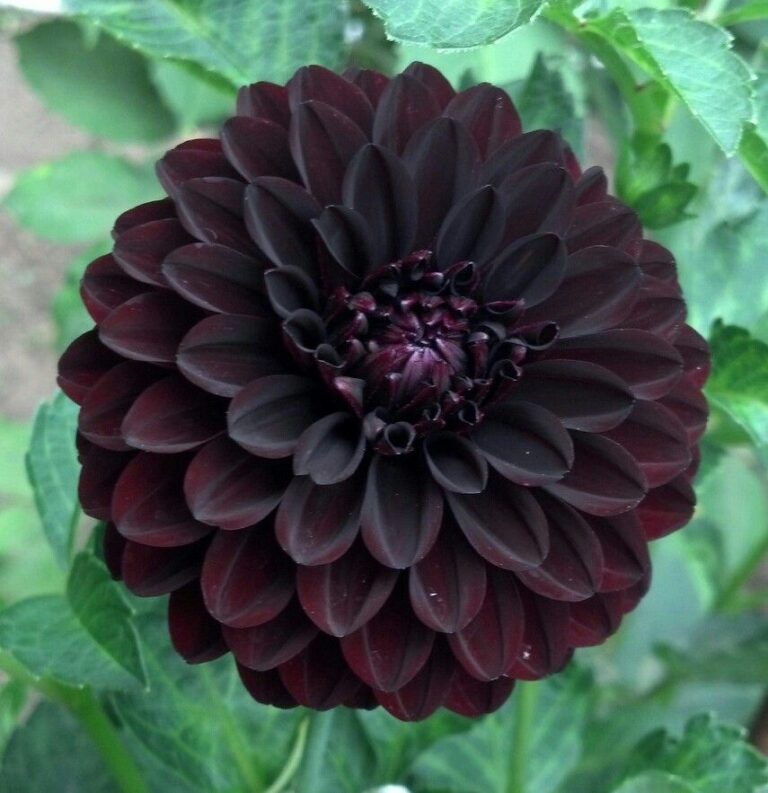Introduction
The Black Dahlia flower, known for its deep, nearly black petals and striking appearance, has charmed gardeners and flower suckers likewise. This flower’s dramatic beauty, coupled with its air of riddle, makes it a name in any theater or flowery arrangement. This composition explores the origins, characteristics, civilization, and emblematic significance of the Black Dahlia, pressing why it has come such a cherished and enigmatic bloom.
Origins and History
Botanical Background
The Black Dahlia Flower is a rubric of bushy, tuberous, herbaceous imperishable shops native to Mexico and Central America. The Black Dahlia, despite its name, is n’t a true black flower. rather, it boasts deep tones of burgundy, grandiloquent, or maroon that appear nearly black in certain lighting conditions. This vision of blackness adds to its mystique and appeal.
Historical Significance
The Black Dahlia Flower has a fabled history, with its civilization dating back to the Aztecs, who employed the factory for its medicinal parcels. The Black Dahlia Flower gained fashionability in Europe in the 19th century when it was introduced as an cosmetic factory. Over time, picky parentage has enhanced its rich, dark tinges, making it a coveted variety among gardeners and flowery contrivers.
Characteristics of the Black Dahlia
Visual Appeal
The Black Dahlia Flower is famed for its large, satiny petals that produce a dramatic, nearly unearthly appearance. The flower heads can vary in size, with some kinds producing blooms as large as a regale plate. The discrepancy between the dark petals and the bright green leafage creates a stunning visual display that draws the eye.
Varietal Differences
There are multitudinous kinds of Black Dahlia Flower, each with its unique characteristics. Some popular types include the’ Black Beauty,’ known for its deep maroon petals, and the’ Arabian Night,’ which features satiny dark blooms. These kinds differ in bloom size, petal shape, and growth habits, offering a range of options for gardeners and florists.
Cultivation and Care
Growing Conditions
Black Dahlias thrive in well- drained soil with plenitude of organic matter. They prefer full sun, taking at least six hours of direct sun each day to produce vibrant blooms. Planting them in a position with good air rotation helps help complaint and promotes healthy growth.
Planting and Maintenance
To cultivate Black Dahlias, start by planting tubers in the spring after the peril of frost has passed. Space the tubers about 18 elevation piecemeal to allow for acceptable growth. Regular watering is essential, particularly during dry spells, but avoid soddening the soil, as this can lead to root spoilage. Deadheading spent flowers encourages nonstop blooming and keeps the factory looking tidy.
Pest and Disease Management
While Black Dahlia Flower are generally hardy, they can be susceptible to pests like aphids, spider diminutives, and slugs. Regular examination and the use of organic or chemical controls can help manage these pests. also, icing good soil drainage and avoiding overhead watering can reduce the threat of fungal conditions.
Symbolism and Cultural Impact
Symbolic Meanings
The Black Dahlia Flower carries rich emblematic meanings, frequently associated with fineness, riddle, and strength. Its dark color can emblematize revitalization, metamorphosis, and the prostrating of challenges. In the language of flowers, giving a Black Dahlia can convey a communication of enduring love or a desire to recognize someone’s unique beauty and adaptability.
Cultural References
The Black Dahlia’s appeal extends beyond the theater , chancing its way into popular culture. utmost famously, it shares its name with the notorious unsolved murder case of Elizabeth Short, known as the Black Dahlia Flower. This association has only added to the flower’s enigmatic character, cementing its place in both horticultural and artistic history.
The Black Dahlia in Floral Design
Arrangements and Bouquets
The dramatic appearance of the Black Dahlia Flower makes it a favorite in flowery design. Its rich, dark petals give a striking discrepancy to lighter blooms, creating visually stunning arrangements. Whether used in matrimonial bouquets, centerpiece displays, or particular bouquets, the Black Dahlia adds a touch of complication and riddle.
Seasonal Displays
Black Dahlias are particularly popular in afterlife displays, where their deep colors round the season’s rich tinges. They pair well with other fall flowers like chrysanthemums, asters, and sunflowers, enhancing the overall beauty of seasonal arrangements.
Conclusion
The Black Dahlia flower, with its deep, satiny petals and dramatic presence, continues to allure and inspire. From its literal roots to its ultramodern- day symbolism and artistic impact, the Black Dahlia stands out as a flower of unequaled beauty and conspiracy. Its civilization, while taking care and attention, prices gardeners with stunning blooms that can transfigure any theater or flowery arrangement. As we continue to appreciate and celebrate this extraordinary flower, the Black Dahlia remains a symbol of fineness, riddle, and enduring appeal.


